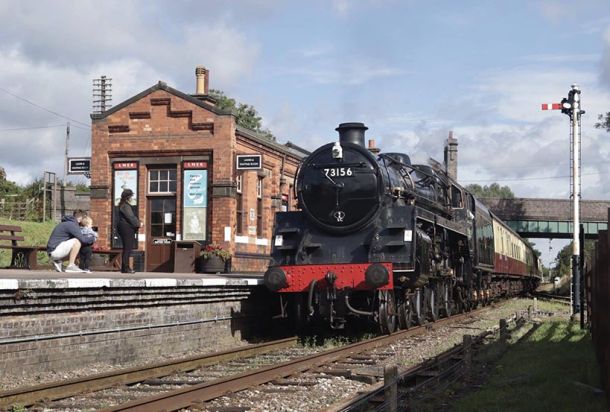When Retford Changed London
The canal junction that was crucial to the Houses Of Parliament project.
Christine Richardson, historian at The Chesterfield Canal Trust tells us more.
The canal junction that was crucial to the Houses Of Parliament project.
Christine Richardson, historian at The Chesterfield Canal Trust tells us more.
Vast crowds of spectators lined the streets, and the banks of the river where the reflections of the flames magnified the spectacle. It was 16 October 1834, and the Houses of Parliament was burning to the ground. Twenty-four hours later most of the buildings were ruined and blackened shells. To be replaced with what? The answer would float through Retford.
The original buildings had been a centuries-old mixture not fit for purpose. Now it was three years before the reign of Victoria and Britain was globally powerful, and the world’s leading industrial state. The replacement building must reflect that and include the one structure remaining, the ancient Westminster Hall - now familiar to us as the location of the recent lying-in-state of Queen Elizabeth II. A design competition was launched, won by the building we know today. But before construction could begin, on the original site, the country was searched for the stone to be used. After visiting 103 quarries it was decided that the new Houses of Parliament would be built with Yorkshire stone, from North Anston in the south of the county. How to get it from there to Westminster was the second vital decision.
The weight and bulk of the blocks would make transportation difficult. The method used would have to incur costs within budget, ensure the blocks were not damaged in transit, be capable of handling vast quantities and reliably continue deliveries once the construction work began. The rail network was limited and not of proven reliability. Furthermore, it was still a new concept and many in authority would not approve of its use in a project of the highest status where any failings would be in the national limelight. Instead bulky and heavy goods were still generally moved as they had been since the dawn of time - on water, via the coast and/or canals and navigable rivers. Therefore, Retford’s canal would play a major role in the project.
Officially named The Chesterfield Canal, its route includes Worksop, Retford and Clayworth because when it was built in the 1770s gentlemen in Retford realised its potential and ensured it went through their town and North Nottinghamshire, ending at West Stockwith where it meets the River Trent. And that junction was crucial in the Houses of Parliament project.
The stone was loaded into the canal’s horse-drawn narrowboats at Kiveton Park, only two miles from the quarry. The boats were not like those now known as “traditional” canal craft. They were not brightly coloured, nor did the crews live aboard, they always had a home ashore. So, the cabin at the stern was quite basic with no “roses and castles” or gaily painted anything. The crew was usually two men and they had a stove, bunks, a small table and a cupboard. There was often another cabin in the bows where the horse’s food was stored. But neither cabin would have been evident to a casual observer because they were entered by a hatch, level with the deck. The reason why they were different from the boats on other canals was because this canal was not linked to any other, so the developments elsewhere were unknown. Also, the boats were usually built at West Stockwith by the Nottinghamshire men who built the river craft of the Trent, so they built what they knew and simply changed the dimensions to suit the restrictions of the canal.
It was the 1840s when the major tonnages of the Houses of Parliament floated through Retford. The Canal Company records for that time have not come to light so we do not know the names of the boats or the crews. They would have needed an overnight stop, with stables for their horse, and preferably a pub for the crew. There would have been five or six boat-loads every week to West Stockwith. There, in the basin at the end of the canal, the stone was unloaded and stored by the water. Once a week it was loaded into the craft capable of taking it the rest of the way to Westminster. They were Humber sloops, sailing vessels that could deal with the shallow winding, and tidal, waters of the Trent, the tricky waters of the Humber estuary, the perils of going down the North Sea, and then up the Thames to London. The whole journey would probably have taken the Humber sloops four or five days, depending on the weather. They would not have gone all the way to Westminster because there were already four bridges over the Thames, and Humber sloops could not readily lower their masts. So, they would have moved the stone into lighters (barges) in the Pool of London, a busy commercial hub just before London Bridge. There they could reload with return cargoes, necessary not only for commercial reasons but to give them stability. Meanwhile, the lighters would be towed up the Thames to Westminster by steam-tugs which were numerous at that time. There they could come alongside the building site to unload the stone. A remarkably efficient transport system.
If the canal had been built along its originally planned route it is unlikely that the stone would have come from the quarry selected because the canal would have gone to Bawtry, where cargoes would have been moved into boats on the River Idle, and then down to West Stockwith. But navigation of the Idle was not reliable, nor was there a basin at its junction with the Trent. Therefore, the 1770’s gentlemen of Retford who had the route changed became responsible for the appearance of one of the world’s most famous buildings.
For further information go to www.chesterfield-canal-trust.org.uk.
All imagery courtesy of The Chesterfield Canal Trust.










